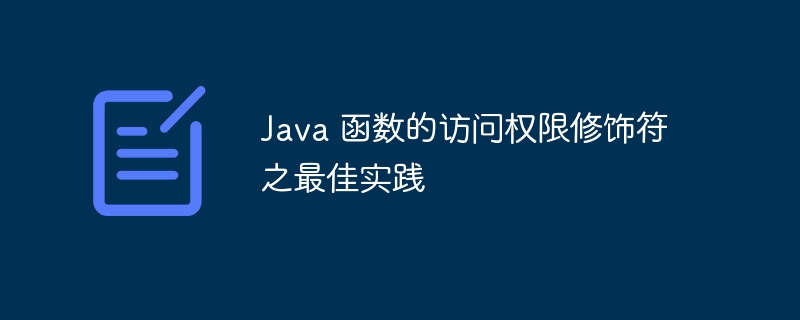
Best practice for access modifiers for Java functions: Use the most restrictive modifier, which defaults to private. Inner classes use the private modifier. Protected methods use the protected modifier, allowing access by subclasses. All properties in the immutable class are set to private and accessed through getter methods. Public APIs use the public modifier to make them accessible to external classes.

Best Practices for Access Modifiers of Java Functions
Access modifiers control the access of code outside a class or package to methods, Property access rights. Following appropriate best practices improves code encapsulation, security, and promotes code maintainability.
Access permission modifiers
There are 4 access permission modifiers in Java:
Best Practice
privateby default and raised only when necessary.privateaccess modifier to restrict external access.protectedaccess modifier allows subclass methods to access parent class protected methods.privateand passedgettermethods access.publicaccess modifier so that it can be accessed by external classes.Practical case
Consider aPersonclass, which has agetFirstName()method:
public class Person { private String firstName; public String getFirstName() { return firstName; } }
Since thefirstNameattribute is only used internally by the class, make itprivate. ThegetFirstName()method uses thepublicaccess modifier so that it is accessible to external classes.
Conclusion
Following these best practices can significantly improve the accessibility, security, and maintainability of your Java code. By explicitly restricting access levels, you protect sensitive data, reduce coupling, and promote more robust, maintainable applications.
The above is the detailed content of Best practices for access modifiers of Java functions. For more information, please follow other related articles on the PHP Chinese website!
